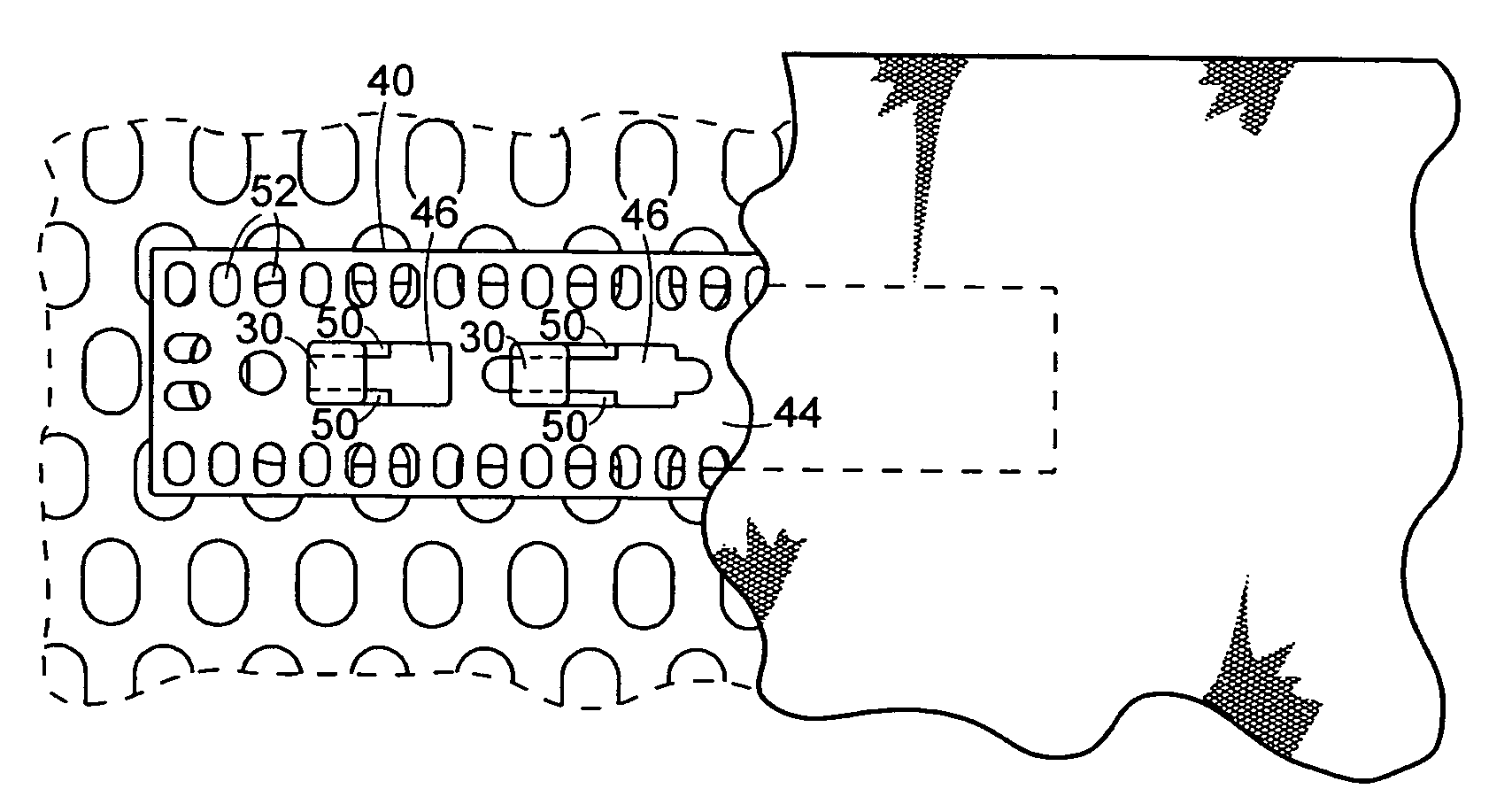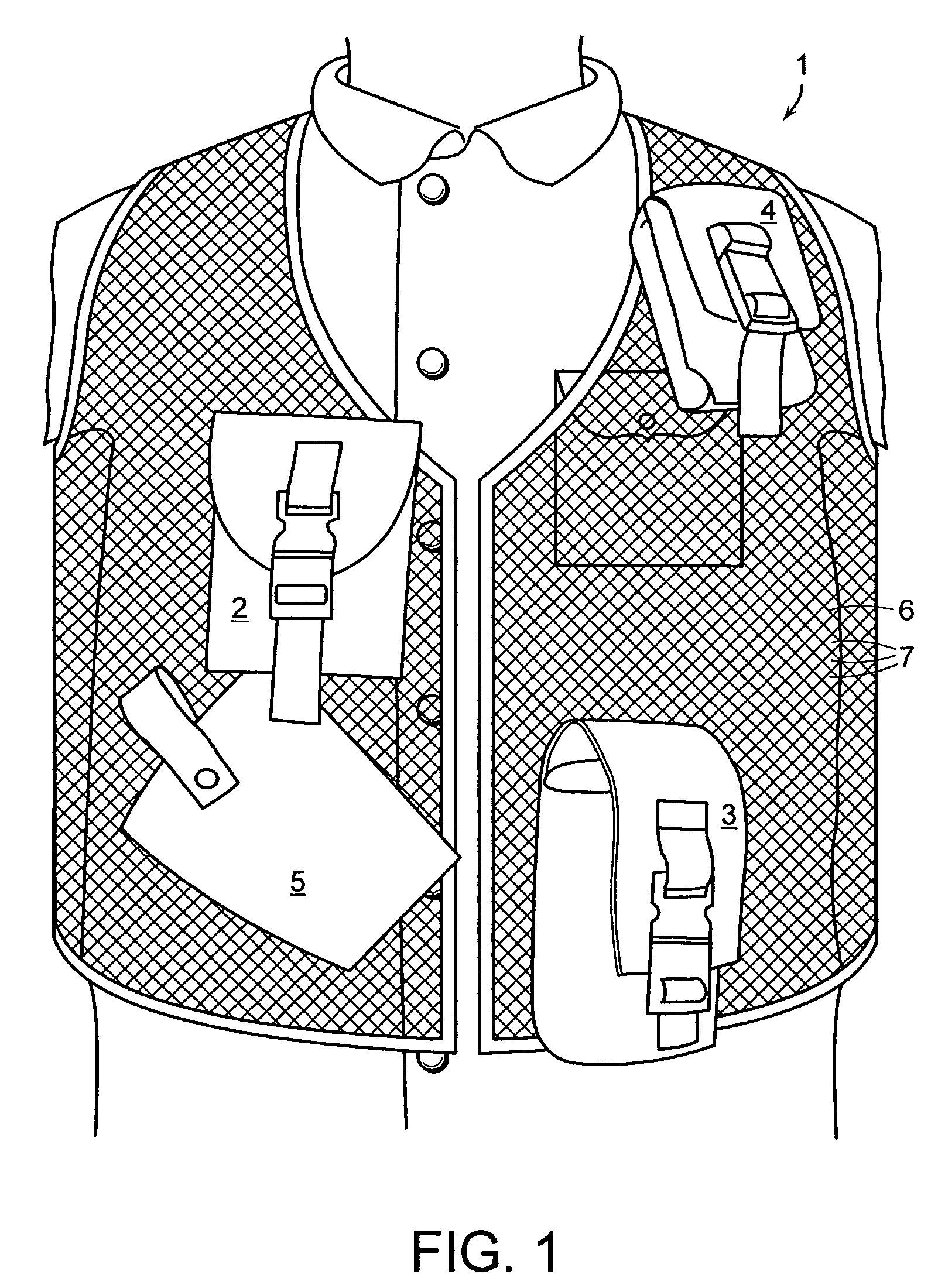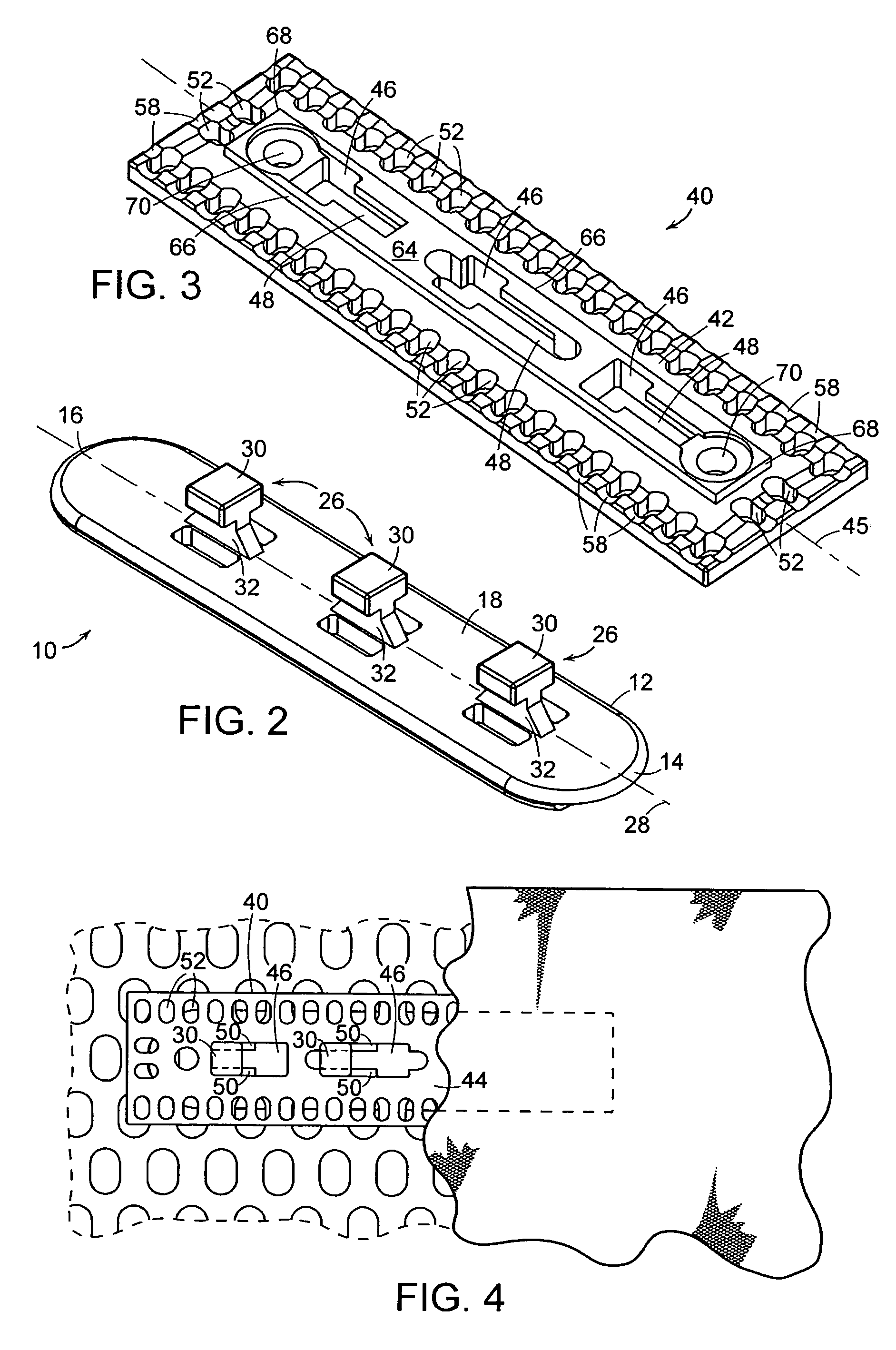Modular attachment assembly
a module and accessory technology, applied in the field of accessory components, can solve the problems of inability to adjust the position of the pocket permanently attached, the inability to exchange for more appropriate alternative accessories, and the inability to meet the comfort and accessibility of the individual user, so as to improve the utility of both the accessory components and the garment, reduce weight, and reduce heat stress
- Summary
- Abstract
- Description
- Claims
- Application Information
AI Technical Summary
Benefits of technology
Problems solved by technology
Method used
Image
Examples
Embodiment Construction
[0028]Referring to FIG. 1, vest 1 is shown having various accessory components attached to it, including a pocket 2, pouch 3, ammunition pocket 4, and pistol holster 5. The accessory components are located on and removably attached to the vest by modular assemblies in accordance with the present invention. More particularly, a meshed fabric 6 having an array of first openings 7 is provided as an integral part of the vest 1. One or more base plates are attached to each accessory component. For each base plate, a locking plate is provided to interlock with the base plate and to trap the meshed fabric 6 of the vest 1 between the base plate and the locking plate. The accessory components may be attached at various selected positions and orientations to suit the wearer of the vest.
[0029]A non-limiting example of a mesh fabric 6 is that available from Crossfire Australia Pty Ltd., of Braidwood, NSW, Australia.
[0030]With reference additionally to FIGS. 2-9, a locking plate 10 is shown havi...
PUM
 Login to View More
Login to View More Abstract
Description
Claims
Application Information
 Login to View More
Login to View More - R&D
- Intellectual Property
- Life Sciences
- Materials
- Tech Scout
- Unparalleled Data Quality
- Higher Quality Content
- 60% Fewer Hallucinations
Browse by: Latest US Patents, China's latest patents, Technical Efficacy Thesaurus, Application Domain, Technology Topic, Popular Technical Reports.
© 2025 PatSnap. All rights reserved.Legal|Privacy policy|Modern Slavery Act Transparency Statement|Sitemap|About US| Contact US: help@patsnap.com



